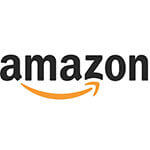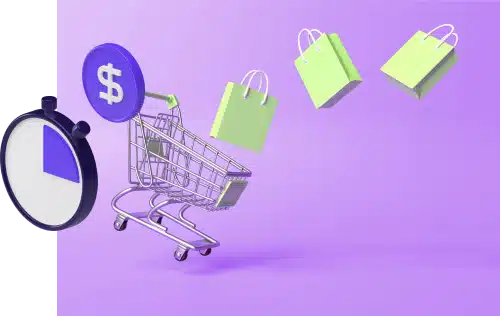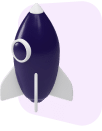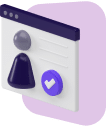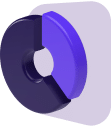With sweeping global popularity, Amazon has been sitting on the throne of electronic shopping for over a decade. This vast online marketplace has millions of sellers showcasing an extensive range of products and even more buyers making daily purchases.
Are you considering becoming a seller on Amazon but don’t know where to start?
You’re not alone. Many people are interested in selling on Amazon thanks to the site’s established prominence, massive customer base, and convenient operations.
Luckily, learning how to sell on Amazon is easy once you understand the ropes. This guide will walk you through the entire process to ensure your start is successful.
- Why You Should Consider Selling On Amazon
- Problems With Selling On Amazon
- What You’ll Need to Sell On Amazon
- What to Sell On Amazon
- Startup Costs
- How to Choose Products to Sell on Amazon
- How To Sell On Amazon: Step-By-Step Instructions
- Step 1: Get Acquainted with Amazon’s Policies, Guidelines, and Fees
- Step 2: Develop a Business Model
- Step 3: Set Up a Seller Account
- Step 4: Choose a Fulfillment Method
- Step 5: Find a Trusted Supplier
- Step 6: List Your Product
- Step 7: Manage Your Inventory
- Step 8. Amazon Product Listing Optimization
- Step 9: Optimize Your Brand Presence
- Things to Consider When Selling On Amazon
- Frequently Asked Questions
- Similar Tutorials to Check Out
- Wrapping Up
Why You Should Consider Selling On Amazon
If you’re offering a product with an audience willing to buy it, the Amazon marketplace can be a terrific opportunity for you to make a profit.
Here are some reasons why you should consider selling on this platform:
- Worldwide customer base: Amazon has millions of loyal repeat buyers all over the globe.
- Sustainable potential: Amazon is an e-commerce giant that continues to grow every day.
- Option to delegate inventory management: Amazon can save you the hassle of dealing with logistics.
- Excellent customer service: Amazon deals with a huge chunk of your customers’ complaints and inquiries.
Problems With Selling On Amazon
When deciding where to sell things online, Amazon is likely to pop into your head before other e-commerce platforms.
While it can provide a good source of income for many sellers, not everyone does well.
Here are some issues that may deem Amazon not the best choice for your business:
- Less control: Amazon takes away much of your control over aspects such as packaging, pricing, and processing.
- Various fees: Joining Amazon as an individual seller involves paying multiple fees that may affect your business’s scalability.
- Tough competition: Amazon has a lot of sellers within each category. You’ll be competing with them while simultaneously juggling the site’s algorithm.
- Amazon reputation: Your sales will be subject to the public’s opinion of Amazon.
What You’ll Need to Sell On Amazon
If you’re set on becoming a seller on Amazon, you need certain tools to get started.
Prepare the following essentials for a successful online Amazon store:
- Product: Choose a suitable product and determine its category, price range, and feature.
- Budget: Make sure your funds can cover the initial cost of orders and fees.
- Selling strategy: Where will your products come from? Are you a private label owner or a reseller?
- Amazon Seller Account: A personal Amazon account can do, but a seller account ensures a more streamlined and professional operation.
- Selling plan: Select either the Individual Plan or the Professional Plan.
- Access to Amazon Seller Central: The Amazon Seller app allows for centralized, on-the-go management of your online business
- Bank account: You need a bank account to tie to Amazon so you can receive payments, pay fees, and more.
What to Sell On Amazon
Before you can start selling a product on Amazon, you need to first figure out what that product will be.
Here are some of the best product types to sell on Amazon whether you’re a beginner or a veteran:
Electronics
These include earphones, batteries, mobile phone accessories, cameras, TVs, home entertainment, speakers, and a lot more.
Why This Product Sells Well
Technology is an ever-growing part of our lives. New gadgets, models, and designs are always coming out, and people always want to try them.
Print-on-Demand Items
These include t-shirts, mugs, bottles, hats, posters, key chains, and tons of other products with your design printed on them.
There’s no need to carry inventory because you can work with websites such as Printful to make the items and ship them on your behalf.
Why This Product Sells Well
In 2021, the print-on-demand industry was valued at $4.9 billion. By 2030, it’s expected to reach almost $40 billion. Need we say more?
Pet Supplies
These include pet food, car seats, treats, beds, grooming tools, apparel, and more.
Why This Product Sells Well
86.9 million households (66 percent) own a pet; that’s in the United States alone. The market is huge and filled with customers looking for a wide range of pet supplies for a variety of pets.
Startup Costs
Statistics show that 44% of home-based businesses are launched for less than $5,000, and if that seems like a lot for the average middle-class American to invest, the amount of money required to start an Amazon business can be substantially lower.
An individual seller’s initial costs depend very much on where the products they are intending to list are sourced from.
Inventory for any given Amazon store may be purchased from a few different suppliers:
- Retail Stores: Many new sellers source their items from local retail or online stores, typically when they’re on sale or clearance, and re-sell them on Amazon. This business model is known as retail arbitrage and is the most suggested method for those who don’t have very much capital to start with.
- Wholesale Suppliers: These are great for purchasing items at a bulk price, resulting in better margins for the seller.
- Private Label Manufacturers: For those who are truly committed to creating their own brand, private label manufacturers allow sellers to modify and customize products to sell on Amazon, an individual’s own website, or wherever they like.
Some additional estimated costs to take into consideration when jumping into selling products on Amazon:
Amazon Seller Account Fee:
It costs $39.99 to open a professional account if you plan on selling more than 40 items a month.
There are referral fees for each sale, but there is no monthly fee.
Individual seller accounts are free for less than 40 items, but there is a 99 cent fee per sale.
UPC Codes:
Amazon requires unique barcodes for each product you plan on selling.
They can be purchased individually for $5 or in bulk.
Product Photography:
Amazon offers product photography in certain areas for a range of prices.
New York and Los Angeles zip codes, for example, averaged $40.
The price will depend on the quality of listings the seller is aiming for, and can vastly affect how they are viewed against their competition.
Logo and Product Branding:
You can hire a freelancer to create a logo for you for as low as $5 on Fiverr.
Branding is key for creating loyalty with customers and further legitimizes the business in the eyes of the buyer, so you may want to consider investing more money here.
How to Choose Products to Sell on Amazon
Without a profitable product to sell, there is no Amazon business.
When deciding to sell products on Amazon, people tend to overlook and rush this part of the process the most.
A perfect profitable product for your store means identifying items you’re passionate about, outlining a selling strategy you’re comfortable with, making sure there’s still an overall decent profit margin.
You may struggle with where to begin in order to fall upon that “aha” moment when the perfect product niche falls in your lap, but here’s a great launching point:
Narrow Down the Product Research Criteria
The initial breakthrough product is what’s called the “beachhead” product.
In business, particularly startups, the beachhead strategy involves focusing all resources on one key area, usually, a smaller market segment or product category, and winning that market first before moving into larger markets.
In other words, it’s the product that generates sales right away, and then the seller is able to branch out.
Choosing a niche is an important part of the journey to becoming a professional seller.
It can be a difficult and overwhelming process, but everything a seller needs to know about what Amazon customers want is available for anyone to see at any time.
The easiest way to see what the hottest items are is to look at the “sponsored ad” products selling on Amazon.
If someone is investing money advertising them, then chances are the product is a high seller with decent margins.
Once a clear business strategy and product niche is established, the next move is to officially sign up as an FBA Seller (fulfilled by Amazon).
How To Sell On Amazon: Step-By-Step Instructions
Now that you’re familiar with the pros and cons of selling on Amazon and you’ve chosen your niche/products, we can move on to the process.
Step 1: Get Acquainted with Amazon’s Policies, Guidelines, and Fees
Before all else, you need to familiarize yourself with Amazon’s constantly updated policies and guidelines. This will ensure your operation is always running smoothly with minimal hiccups.
To this end, Amazon has a Seller Central with a comprehensive section for keeping you well informed. Be sure to brush up on program policies, business credit reports, and business solutions agreements.
You also need to review the fees that Amazon will/may charge as a seller. These fees vary depending on multiple factors such as the product category and the subscription plan.
Examples of seller fees include:
- Selling plans
- Referral fees
- Fulfillment fees
- Storage fees
- Shipping fees
- Inventory fees
- Refund administration fees
Step 2: Develop a Business Model
With your knowledge of Amazon’s policies and fees in mind, your next task is to create an effective business model.
What is your selling strategy? Do you want to own a brand? Do you want to resell products from other brands?
If you decide to be a brand owner, you’re responsible for developing the product. It should serve a need following market research and be backed up with a solid marketing plan.
If you decide to resell, it’s less work. You’ll only need to choose a popular product that already exists. Advertising will be much less demanding.
Step 3: Set Up a Seller Account
How to Set Up an Amazon Seller Account
To sell products with your Amazon account, you’ll begin with the following:

- Visit the Amazon Seller Central
- Select the blue “Register Now” button
- Click “Start selling”
Use your business email to sign up for an Amazon Seller account. Choose a plan and pay the fee to get started.
From there, you’ll be prompted to provide business and contact information. These include:
- Phone number
- Bank account
- Tax details
- Government ID
- Company bio
- Warranty details
- Return/refund policy
You’re now an Amazon seller!
How to Open an Amazon FBA Account
Visit the Fulfillment by Amazon page and select “Get started.”
The seller will then be taken to the Seller Central, and will be prompted to sign in.
This is where all the important details will be entered.

Here you’ll fill in your personal details (cell phone number, address, etc.) as well as tax information, as it’s not necessary to register as a “legal” business right away to start an Amazon business.
Any earnings will be claimed as individual income at the beginning.
Step 4: Choose a Fulfillment Method
Your next task is to decide on a suitable fulfillment method for your Amazon business model.
The fulfillment method is the way your product will be handled from order placement until delivery.
Multiple options are available for this step, but the two most popular ones are Amazon FBA and FBM.
FBA
Short for Fulfilled by Amazon, choosing FBA means you’ll leave it to Amazon to take care of organizing, storing, packing, and shipping.
Besides sending your product to Amazon’s warehouse, you don’t need to do anything else.
This approach saves you tons of time and effort in exchange for an Amazon FBA fee. Your product also receives Prime status.
FBM
If you don’t want to leave your logistics in the hands of Amazon, you can handle them yourself.
FBM is short for Fulfilled by Merchant, which means that sorting, storing, packing, and shipping are all your responsibility.
If you choose this method, then selling on Amazon would be almost the same as selling on your website.
Step 5: Find a Trusted Supplier
Once you’ve selected a fulfillment method and you’re not manufacturing your product, your next task is to partner with a reliable supplier.
Ask for samples of the product(s) and inquire about the prices to compare with different suppliers. Choose a supplier offering good value for money and negotiate a deal.
After receiving your order, check the products for any defects. Trusted suppliers shouldn’t pose too many problems quality-wise, but it’s best to be strict to maintain your Amazon ratings/reputation.
Step 6: List Your Product
Your next order of business is to create a listing for the product. If you’re selling multiple items, you’ll need to create a separate product listing for each one.
Sign in to Seller Central and add the product’s technical details. These include price, condition, SKU, ISBN, GTIN, and available stock. The more informative the listing is, the better the reception.
Optimizing the product listing also makes it easier for any Amazon shopper to find it. Do this by adding high-resolution images, the brand/model, and Prime eligibility.
How to Create Your First Amazon Listing
Now that you’ve built your brand, settled on a product line, and signed up as an official Amazon seller, it’s time to create your first listing.
- Visit the Seller Central and select the inventory drop down.
- Select “Add a Product.”
- Select “Create a new product listing” and start from scratch.
- Choose the category of the products you’re going to be selling.
- Fill out the following prompts to complete the product listing and complete the Amazon FBA listing. The goal is to get the product listing up (but not live) so that the products may be sent into Amazon FBA:
- Title: The product name goes here, you can change this later if you’d like.
- Manufacturer: This is where your company name will be entered.
- Brand: The brand name may also be the company name.
- Your Price: The items can’t be sold until Amazon receives the inventory, so the price isn’t quite important yet and can be changed later. This step is to simply make sure all fields are filled so the listing can be published. If you’re unsure, select a price that’s comparable to the lowest price of a similar product.
- Product ID: Your product ID is the item’s unique UPC code, which we’ll discuss below. This is a required step to sell anything on or offline.
How to Buy a UPC Code
The next step is to buy a UPC Code if the product doesn’t yet have one.
This can be done at BarcodesTalk, where you’ll click through all the steps until the package label can be downloaded.
Open the downloaded folder containing the UPC JPEG image and enter this number in the “Product ID” area of your product listing.
Click on “Save and Finish.”
Your first Amazon listing has successfully been created.
Step 7: Manage Your Inventory
Amazon is one of the most popular selling apps. If you’re using FBA and your product takes off, you’ll need to replenish your stock sooner than you think.
Keeping track of your stock level at Amazon warehouses ensures you never miss out on a sale opportunity. This can be as simple as checking your dashboard on Seller Central.
If you’re using FBM, managing and tracking your inventory becomes even more crucial. You’re responsible for sorting, storing, and shipping, so things can get overwhelming if your inventory is large.
Step 8. Amazon Product Listing Optimization
One of the most neglected yet important parts of product listings in your new Amazon FBA business is optimization.
There are a plethora of resources that teach new sellers ranking tricks, but nothing will boost your SEO strategy like a well-optimized listing.
Optimizing means making the listing description as robust as possible so the product shows up ahead of your competitors on Amazon and other areas of the web.
The best way to be sure customers will see the product listing is to include all keywords relevant to the item.
This means spending some time conducting keyword research.
Once a list of keywords is established, the next step is to place them strategically throughout the product listing.
Here are some areas to consider:
Product Title
Place the item’s top five keywords in the product title, but don’t go overboard, as this may confuse the customer on what you’re actually selling.
Amazon’s algorithm will place listings with strategically placed keywords higher in the shopper’s search results.
So, it’s important to make a list of each product’s most relevant keywords and place them responsibly.
Shoot for this: “Chemex Class Series, Pour-Over Glass Coffeemaker, 10 Cup”
Not this: “Hot Beverage, Caffeine, Chemex Class Series, Pour-Over Glass Coffeemaker, Family, 10 Cup, Breakfast, Coffee Beans, Espresso.”
You should always optimize for mobile first.
Those titles show between 55 and 63 characters in preview.
In addition, there are other things you should optimize. Those include:
- Backend Keywords: Add up to 249 bytes of other important keywords in the “search terms” area when creating the listing (also known as “generic keywords.”) Do not use more than 249 bytes, as Amazon will not index these keywords.
- Bullet Points and Product Description: More keywords may be placed in this area, but only if it doesn’t weaken the product listing’s copy.
- Other Keyword Types: Some products allow you to define additional keyword types, including the item’s “Target Audience” (like men/women). Amazon filters them in the search, so it’s a smart idea to add them.
- More Details: This is where additional product information should be assigned, such as material type. This information should be filled in as thoroughly as possible to ensure customers can access it via the filter navigation and specific product finders.
Step 9: Optimize Your Brand Presence
Amazon makes it easy to start selling stuff online. But the platform doesn’t guarantee the number or frequency of sales.
Marketing your products and improving the appeal of your Amazon presence are your beats to tame.
Here are some tips to help you out:
- Reply to customers’ inquiries
- Follow up on customers’ reviews
- Use on-Amazon promotions
- Study competitors’ marketing strategies
- Include informative videos on the product
Things to Consider When Selling On Amazon
If you’re selling as a beginner on Amazon, you should keep the following points in mind to sustain and boost your brand:
Budget
You need to set up an appropriate budget for your online Amazon store. Consider the initial cost of the products, storage fees, shipping costs, and any other expenses involved.
Product Quality
You need to ensure a satisfactory product quality that matches the average Amazon shopper’s expectations and Amazon policies.
This is crucial to building trust with your audience and boosting your seller presence.
Logistics Management
Deciding who will be managing your inventory and logistics is imperative for your Amazon business.
Are you going to do it? Will you have Amazon do it? Or do you prefer hiring a third-party service?
Marketing
Finally, consider the strategies you’ll implement to promote your product.
Joining Amazon doesn’t guarantee sales – or at least enough of them to earn a living.
This is why working on a marketing plan that focuses on your target audience is key to business success and scalability.
Frequently Asked Questions
We’ve covered everything you need to know about how to sell on Amazon. But here are answers to a couple more questions you may be wondering:
Is It Worth Trying to Sell on Amazon?
Amazon is 100 percent worth trying to sell on if you choose a business model that’s compatible with the site’s unique process.
You also need to implement effective strategies for keeping the fees/costs down to ensure a thriving brand presence.
Is it Easy to Start Selling on Amazon?
The steps for you to start selling on Amazon are simple once you understand the platform’s regulations and fees.
You don’t need to have an established business, and as long as you put together a comprehensive plan, your Amazon seller journey should have a smooth kick-off.
Similar Tutorials to Check Out
Amazon may be the largest online shopping platform, but it’s not the only one. Consider the following alternatives to showcase your products:
- How to Sell on Craigslist: if you’re looking for a site where you can sell items you no longer need, Craigslist is a perfect option. You can make some extra cash without having to worry about additional fees.
- How to Sell on Etsy: if you’re artsy or craftsy and looking to sell your creations online, Etsy is waiting for you.
- How to Sell on Facebook: if you want to sell new or used items quickly via direct contact with customers, then Facebook is your ideal marketplace.
Wrapping Up
That’s it for today’s step-by-step guide on how to sell on Amazon with an impressive profit margin.
Tackling this online shopping giant becomes easier if you carefully study the lists above and follow our tips. Before you know it, you’ll be set to start a successful Amazon brand presence.
Be sure to leave us a comment if you have any thoughts or questions and share this guide if you think it can help others.


